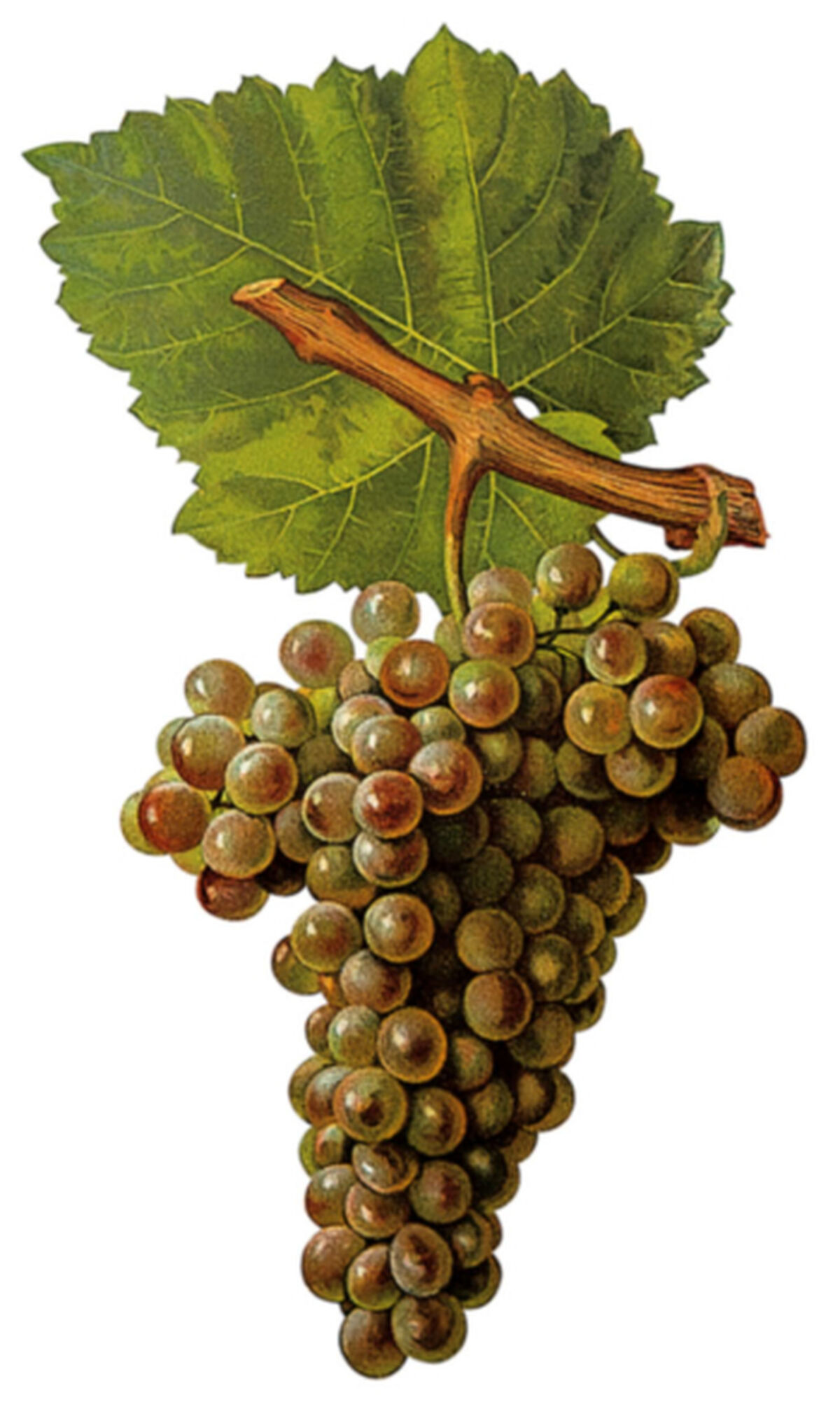Picardan
Picardan is a grape whose first mention talks about it being "very common", but is now one of the world's rarest, with just over an acre planted in France. So the half-acre that we planted at Tablas Creek increased the world's Picardan footprint by 40%! Its bright flavors and mineral complexity have made it an appealing varietal wine and a useful component in our Esprit de Tablas Blanc.

History
Picardan is rare nowadays, but its first mention in the historical record from 1715 talks about it being "very common", with "greenish, sweet and soft berries". It was cultivated under various names, including Araignan Blanc, Oeillade Blanche, and Gallet, in much of the south of France. The twin 19th Century plagues of powdery mildew and phylloxera appear to have dealt it a blow from which it never recovered, and as of 2008 there was just over an acre reported in all of France. Nevertheless, it is recognized in the official Chateauneuf-du-Pape regulations as a distinct grape, and the Perrins had enough confidence to supply us with a cutting when in 2003 we decided that we wanted the complete collection of Chateauneuf-du-Pape varieties.
Picardan's name comes, apparently, from the same root as Picpoul: the French verb piquer ("to sting"). That said, it is not the same as Picardin (note the different spelling), a white blend of Clairette Blanche and Picpoul Blanc that was widely exported from the Languedoc in the 17th and 18th centuries. Nor does it have anything to do with the French region of Picardy, a district north-east of Paris (including the Somme) that saw some of the most famous battles of World War I. Because of the confusion with the name, and the grape's scarcity, even the small amount of literature that's out there on this rare grape is suspect. So, we really are breaking new ground here.
We have Picardan not because of any particular expectations for it, but because we wanted to complete set of Chateauneuf du Pape grapes to evaluate. We took cuttings from Beaucastel in 2003, brought it into quarantine at UC Davis, and it spent seven years in quarantine at U.C. Davis before being released to us in late 2010, propagated, and in 2013 planted into a half-acre block at the extreme western edge of our property that increased the world's footprint by 40%. Our first production of Picardan off of these vines came in 2016.
Picardan in the Vineyard & Cellar
Picardan buds out in the middle of the spring cycle, making it somewhat less prone to damage in our spring frosts than early budding grapes like Viognier and Grenache Blanc. Its vines show moderate vigor, although they tend to hang a heavy crop, which we've had to thin the last two years. The vines seem to struggle in areas where there is relatively little topsoil and the limestone layers are right at the surface. Now this is true of all vines to some extent, but Picardan's reactions seem more pronounced to us, with significant variations in vigor between the lower down areas where the topsoil is deeper and the higher vines forced to contend with calcareous soils just a few inches below the surface. We're not sure yet whether the vines will overcome this with more age, or not, but we'll be keeping an eye on it.
The canes are relatively thin, and the clusters small to medium sized and fairly loose. Berries are also medium sized and have an oblong shape. Although it is head-trained in Chateauneuf du Pape, the thin canes suggest that it might struggle in the wind, and we planted our small block double-cordon on trellis. It ripens just past the middle of the harvest season, after grapes like Viognier, Marsanne, Grenache Blanc, and Syrah, typically right as we're starting Grenache Noir.
As we do with our new varieties, we bottled our Picardan on its own the first few years of production. Starting in 2017, we have also included it in our Esprit de Tablas Blanc many years, where its brightness provides counterpoint to the wine's Roussanne base, and we have continued to bottle Picardan as a varietal wine when we can.
Aromas and Flavors
Picardan is on the nose reminiscent in many ways of a softer take on Picpoul: aromas of chamomile, mint, and a little chalky minerality. On the palate flavors of nectarine and crystallized pineapple, briny minerality and white pepper. The finish is notably bright, with flavors of Meyer lemon zest, key lime pie, and saline mineral. It seems like a wine that should be consumed relatively young, but we look forward to finding out how it ages.
This article originally appeared in one of our newsletters. Each newsletter, we spotlight the history and characteristics of one of our Rhone varietals. You can sign up for our mailing list.
You can view a one-minute video summary of Picardan on our YouTube page.
You can go back to the summaries of the different Rhône grape varietals.
